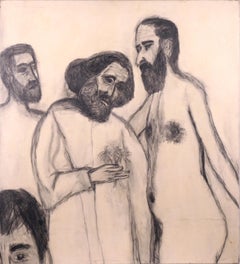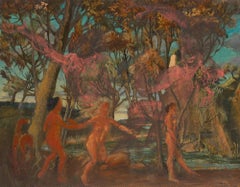Items Similar to The Prelude, Early 20th Century Egg Tempera on board
Want more images or videos?
Request additional images or videos from the seller
1 of 4
Francis PlummerThe Prelude, Early 20th Century Egg Tempera on board
$16,493.40
£12,000
€14,039.33
CA$22,728.73
A$25,012.74
CHF 13,116.38
MX$303,552.79
NOK 163,952.65
SEK 155,217.74
DKK 104,810.61
About the Item
Francis Plummer
1930 - 2019
The Prelude
Egg Tempera on board
Image size: 39 ½ x 49 ¼ inches
Original Frame
This work comes from a rare collection of works directly from the artist's estate, painted in the 1950s, is a fascinatingly original take on the human form.
Francis Plummer studied at the Royal Academy between 1949 and 1959, he was championed by Stanley Spencer and Sir Herbert Read and was the recipient of the coveted Leverhulme Scholarship.
He was an artist who specialised in portraits and figurative works, the latter forming the basis of our exhibition. His background as an anatomical artist is apparent in the portrayal of every muscle and tendon.
This collection of work is in the medium of egg tempera, a technique little used since the frescos of the Renaissance. He often worked on a large scale, but in tremendous detail, combining classical iconography and formal composition with visual exploration evocative of William Blake and Stanley Spencer. His principle focus is the depiction of the human form. He was featured doing just this in a wonderful Pathe short film, An Artist in Eggs (1958), which can be found on YouTube. Be sure to look out for one of the paintings in our exhibition on the wall of Plummer's studio.
The medium of egg tempera, used as a method of painting successive layers and the resulting translucency was ideal in portraying the subtleties of skin tone and physical detail.
Francis Plummer exhibited widely during his lifetime at venues including the Leicester Galleries, Leighton House Galleries and the Alwyn Gallery in Mayfair in 1975.
Few words by the artist:
The human form is used as the chief vehicle of expression. I regard the nude not nakedness as a distinct art form, and in it I identify with some of the greatest expressions in classical European painting and sculpture. It is extremely difficult to paint a convincing nude which contributes an insight of genuine and significant originality freed from direct dependence on models, but this is what I try to do, as-did the masters. Therefore, many studies from the life have been made as exercises to build up a background of knowledge and skill.
"In these works the Figure Man is used as icon, without reference to history or fashion. Over time it has evolved into the art form of the nude, something quite other than the portraiture of naked bodies. The endeavour is to show as real a spiritual existence, never to be endorsed by science or have the benefits of mercantile credit. Yet our space/time world does not exist in vacuo. Beauty is sought through definitive design existing always; and the appreciation of figure shapes and forms must stand without regard for any literary or other source for meaning, though gnosis underpins everything as far as possible. The themes are allegories, not reality theatre."
- Creator:Francis Plummer (1930 - 2019)
- Dimensions:Height: 39.5 in (100.33 cm)Width: 49.25 in (125.1 cm)
- More Editions & Sizes:39 ½ x 49 ¼ inchesPrice: $16,493
- Medium:
- Period:
- Condition:
- Gallery Location:London, GB
- Reference Number:1stDibs: LU5246141832
About the Seller
5.0
Vetted Professional Seller
Every seller passes strict standards for authenticity and reliability
Established in 2007
1stDibs seller since 2014
82 sales on 1stDibs
Typical response time: 4 hours
- ShippingRetrieving quote...Shipping from: London, United Kingdom
- Return Policy
Authenticity Guarantee
In the unlikely event there’s an issue with an item’s authenticity, contact us within 1 year for a full refund. DetailsMoney-Back Guarantee
If your item is not as described, is damaged in transit, or does not arrive, contact us within 7 days for a full refund. Details24-Hour Cancellation
You have a 24-hour grace period in which to reconsider your purchase, with no questions asked.Vetted Professional Sellers
Our world-class sellers must adhere to strict standards for service and quality, maintaining the integrity of our listings.Price-Match Guarantee
If you find that a seller listed the same item for a lower price elsewhere, we’ll match it.Trusted Global Delivery
Our best-in-class carrier network provides specialized shipping options worldwide, including custom delivery.More From This Seller
View AllExiled, Early 20th-Century Pre-Raphaelite Oil on board
By Francis Plummer
Located in London, GB
Francis Plummer
1930 - 2019
Exiled
Oil on board
Image size: 20 ½ x 24 ½ inches
Framed
This rare collection of works from the artists estate, painted i...
Category
Mid-20th Century Pre-Raphaelite Figurative Paintings
Materials
Oil
The Triple Deity, 20th Century Egg Tempera
By Francis Plummer
Located in London, GB
Francis Plummer
1930 - 2019
The Triple Deity
Egg Tempera on board, signed lower left
Image size: 24 x 20 inches
Gilt Framed
Plummer specialised in th...
Category
1950s Art Deco Figurative Paintings
Materials
Egg Tempera
The Dance, 20th Century Oil Painting
By Francis Plummer
Located in London, GB
Oil on board
Image size: 30 ¼ x 23 ½ inches
Gilt frame
Plummer specialised in the medium of egg tempera, a technique little used since the frescos of the Renaissance, he often work...
Category
Mid-20th Century English School Figurative Paintings
Materials
Oil, Board
Forgotten Journey, 20th Century British Artist, Signed and Dated 1939
By Harold Yates
Located in London, GB
Watercolour and ink on paper, signed and dated '1939' bottom left and entitled on the reverse
Image size: 18 x 9 inches (45.75 x 23 cm)
Original frame
This is a wonderfully moving w...
Category
1930s Modern Figurative Paintings
Materials
Ink, Watercolor
The Shepherd, English Victorian 19th Century Egg Tempera
Located in London, GB
Sir William Blake Richmond KCB, RA, PPRBSA
1842 - 1921
The Shepherd
Egg tempera on wooden panel, signed with initials bottom left
Image size: 8 ¼ x 5 ½ inches
Period gilt oak frame
A newly discovered work by the artist.
Sir William Blake Richmond KCB, RA, PPRBSA was an English portrait painter, sculptor and a designer of stained glass and mosaic. He is best known for his portrait work and decorative mosaics in St Paul's Cathedral in London.
He was the son of the portraitist George Richmond RA and studied at the Royal Academy Schools in the early 1860s. Influenced by his father and by Sir John Everett Millais, he is best known for his mosaic decorations below the dome and in the apse of St Paul's Cathedral in London.
His father, George Richmond, was one of 'the Ancients' who were a group of artists who formed around the visionary artist and poet William Blake. Samuel Palmer was an other of the ancients and a close friend of the family.
Our painting could have been inspired by George Richmond’s engraving 'The Shepherd', 1827, but in our panel the shepherd is turned round facing away, and is playing a flute instead of resting on a staff. But the sheep and other elements are there.
It is also suggestive of Welby Sherman's engraving after Samuel Palmer of the same name and date, but here the shepherd is sitting but like ours turned away. William Blake's is an altogether happier image given the figure is playing to his sheep.
Our painting is playing with some of the same ideas and feels like the same sort of period, and the ‘fresco’ like chalk ground is interesting, as is the pen and ink finishing on the tempera. All three are strongly influenced by Blake's illustrations to Thornton's 'Virgil'. The shepherd and his flock are clearly based on Thenot and his sheep in the Frontispiece to Thornton.
Blake Richmond wrote:"If there be the least value in my pictures, it is due to such lovely early impressions derived from the sweet poetic work of many of my father's contemporaries, Calvert, Blake and others, whose shadows are substance still to me" [Sir William Blake Richmond, letter to his father, 50 years after the death of William Blake, from Stirling op. cit p. 28].
Richmond was given private art lessons by John Ruskin before attending the Royal Academy for three years. After that he spent a number of years in Italy, where an encounter with a shepherd called Beppino, 'a splendid speciman of a Sabine Shepherd', could also have gave him the inspiration for the painting we show here. Richmond recalls how he met Beppino on the hillside, and was invited to share the shade of the shepherd's capanna, a wooden hut. 'What a place! In an instant of time I was back into the age of kings, and I knew Romulus had lived and am sure that he lived in a hut exactly like this one'.
That night Richmond dined at Beppino's hut 'on roast kid, hard bread dipped in Roman wine, goat's cream and white ricotta'. The shepherd had such an impression on Richmond that he sought him out on a return visit to Italy some years later, but was saddened to hear that Beppino 'had joined his fore-fathers in the shades'.
He was moved to write the following, which perfectly expresses the mood of this painting and his tribute to a fleeting companion:
'Little events of this kind unite past times with present, create and emphasis continuity of human instincts, which seem to defy time and make travel so intensely interesting and invigorating to a citizen of this world. One need not go to the palace, far otherwise, or to cities and towns to discover the kernal of enduring civilisations. One finds it, if one wills to do so, in the backbone of the world, an ancient peasantry who have watched and still watch the progress of the stars'.
Richmond was influential in the early stages of the Arts and Crafts Movement in his selection of bold colours and materials for the mosaics in St. Paul's Cathedral and in his collaboration with James Powell and Sons...
Category
1860s Victorian Figurative Paintings
Materials
Ink, Egg Tempera
Figurine, 20th Century Oil on Board Signed Painting, Contemporary Frame
Located in London, GB
Mayer
20th Century
Figurine
Oil on board, signed lower right
Image size: 16 x 13 inches
Contemporary frame
Category
20th Century Figurative Paintings
Materials
Oil, Board
You May Also Like
Antique American Modernist Period Male Nude Surrealist Masterpiece Oil Painting
Located in Buffalo, NY
Amazing early American surrealist nude male portrait landscape. Painted by Charles W St Clair. Oil on board. Framed. Image size, 24L x 30H. Super detailed and rare!
Category
1930s Surrealist Nude Paintings
Materials
Canvas, Oil
[Bruce Sargeant (1898-1938)] Artist's Studio, Contemporary Figurative Painting
By Mark Beard
Located in New York, NY
A classical anatomical figure in an artist's studio, surrounded by brushes and a palette, with muted tones creating a contemplative and intimate atmosphere. Contemporary figurative painting by Mark Beard [Bruce Sargeant (1898-1938)]
Artist’s Studio
n.d.
Signed in red, u.r.
Oil on canvas
36 x 18 inches
$4,000 + $300 framing
The pure and brilliant world of Bruce Sargeant’s art seems terribly removed from our own, unhampered by the
prevalent inconsistencies of today’s world. Peopled with comely thoroughbreds, his paintings project a world vision
unchanged from the models cherished by idealist writers like E. M. Forster and Rupert Brooke in that golden decade
that led up to the Great War. Neither buff nor narcissistic, his fair-haired young athletes pose, somewhat
uncomfortably, before the painter’s gaze, not wanting the attention yet feeling their duty to submit. Though
tantalized by the New World dabbings of Robert Henri and John Sloan, Sargeant found his true inspiration in the art
and ethos of fifth-century Athens, where the achievement of the kaloi kagathoi, young men who were “beautiful to
look at and worthy of admiration,” were the perfect models for artistic rendering and public adulation. At base,
Sargeant’s models, like the sculptures of Lysippus and Praxiteles, are idealized heroes whose achievements on the
playing field earn them their renown. However, unlike his precursors, the painter requires no civic responsibility
from his ephebes, only physical stamina, gymnastic prowess, and good looks. His work bespeaks a class that existed
briefly, but was prolonged and attenuated in the languorous novels of writers such as Denton Welch...
Category
2010s Contemporary Paintings
Materials
Canvas, Oil
"The Cognoscenti", Contemporary Symbolist Figurative
By Michael Pauker
Located in Soquel, CA
"The Cognoscenti", a large-scale contemporary charcoal on canvas figurative scene by Bay Area artist Michael Pauker (American, b. 1957), 2008. A group of bearded men, whom the title ...
Category
Early 2000s Contemporary Figurative Drawings and Watercolors
Materials
Canvas, Charcoal
$2,120 Sale Price
20% Off
Untitled. 1990. Cardboard, tempera. 50.5x39.8cm
By Vladimir Glushenkov
Located in Riga, LV
Vladimir Glushenkov (1948-2009)
(May 21, 1948, Riga - December 26, 2009, Riga) - painter, graphic artist, poet, translator.
Vladimir Glushkenkov was born in family with Russian-Poli...
Category
Early 1900s Expressionist Figurative Paintings
Materials
Tempera, Cardboard
Antique American Modernist Mural Symbolist Figural Male Nude Portrait Painting
Located in Buffalo, NY
Antique American or European mural study painting. Tempera, oil and mixed media on board. Framed. Measuring: 25 by 30 inches overall,. In excellent original condition. Handsomely fr...
Category
Early 1900s Modern Portrait Paintings
Materials
Oil, Canvas
Helen Steinthal (1911-1991) - 20th Century Watercolour, The Warning
Located in Corsham, GB
A striking scene depicting a boy on horseback alerting a group of people on the beach pointing into the distance as the concerned people gather. The scene shows classical inspiration...
Category
20th Century Figurative Drawings and Watercolors
Materials
Watercolor
$291 Sale Price
20% Off
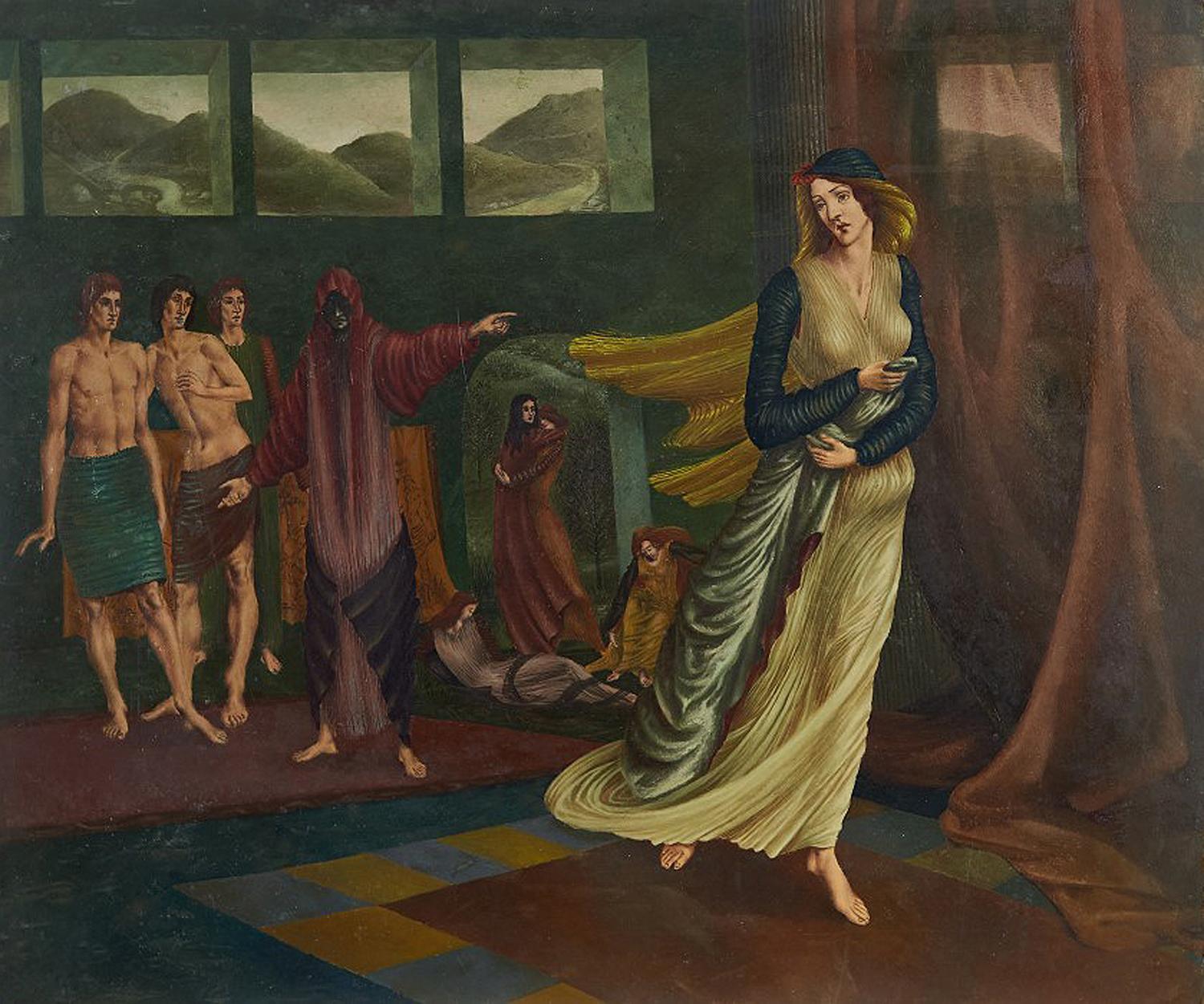
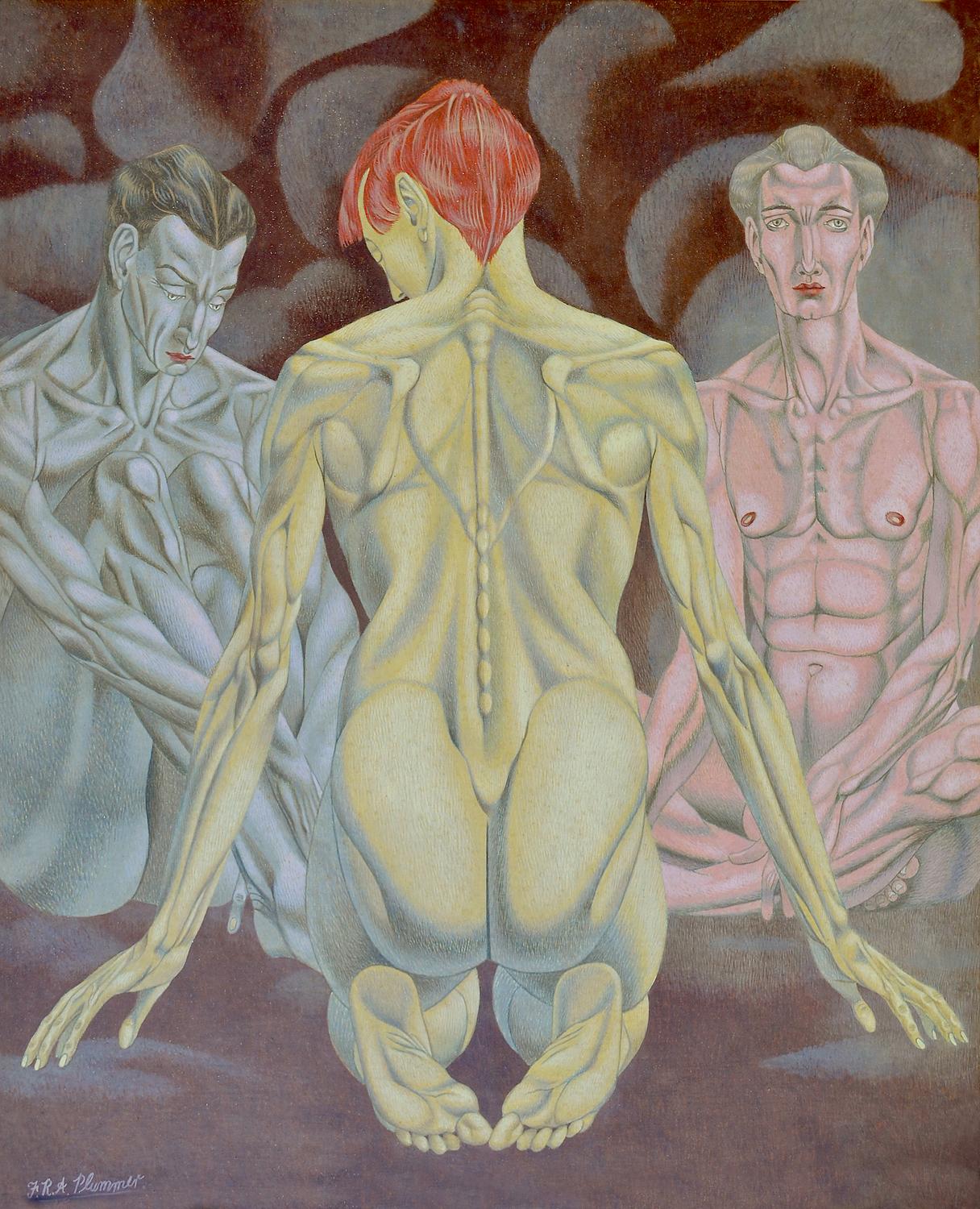
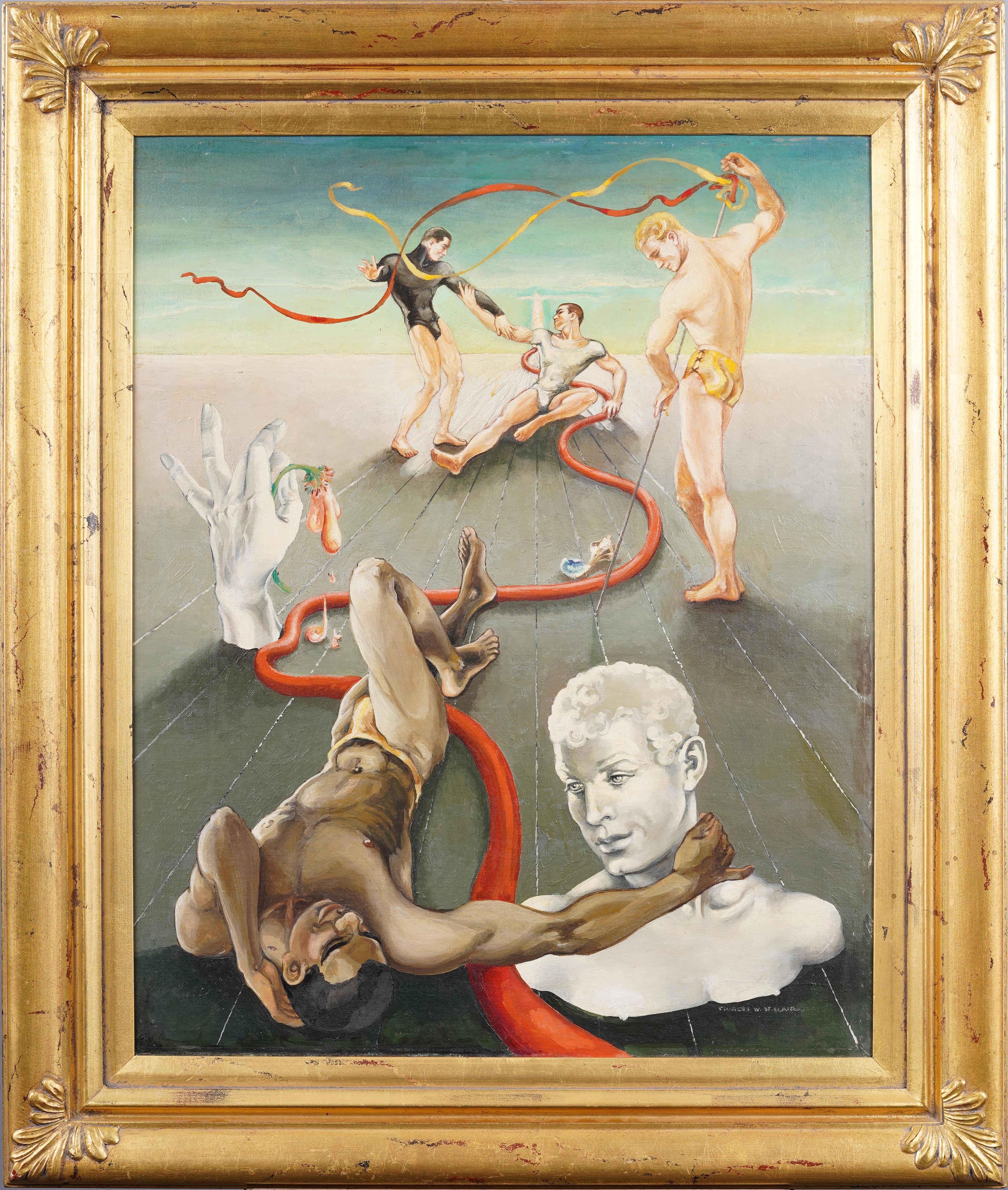
![[Bruce Sargeant (1898-1938)] Artist's Studio, Contemporary Figurative Painting](https://a.1stdibscdn.com/mark-beard-paintings-bruce-sargeant-1898-1938-artists-studio-for-sale/a_9323/1726073227289/Beard_Untitled_Artist_s_Studio__master.jpg)
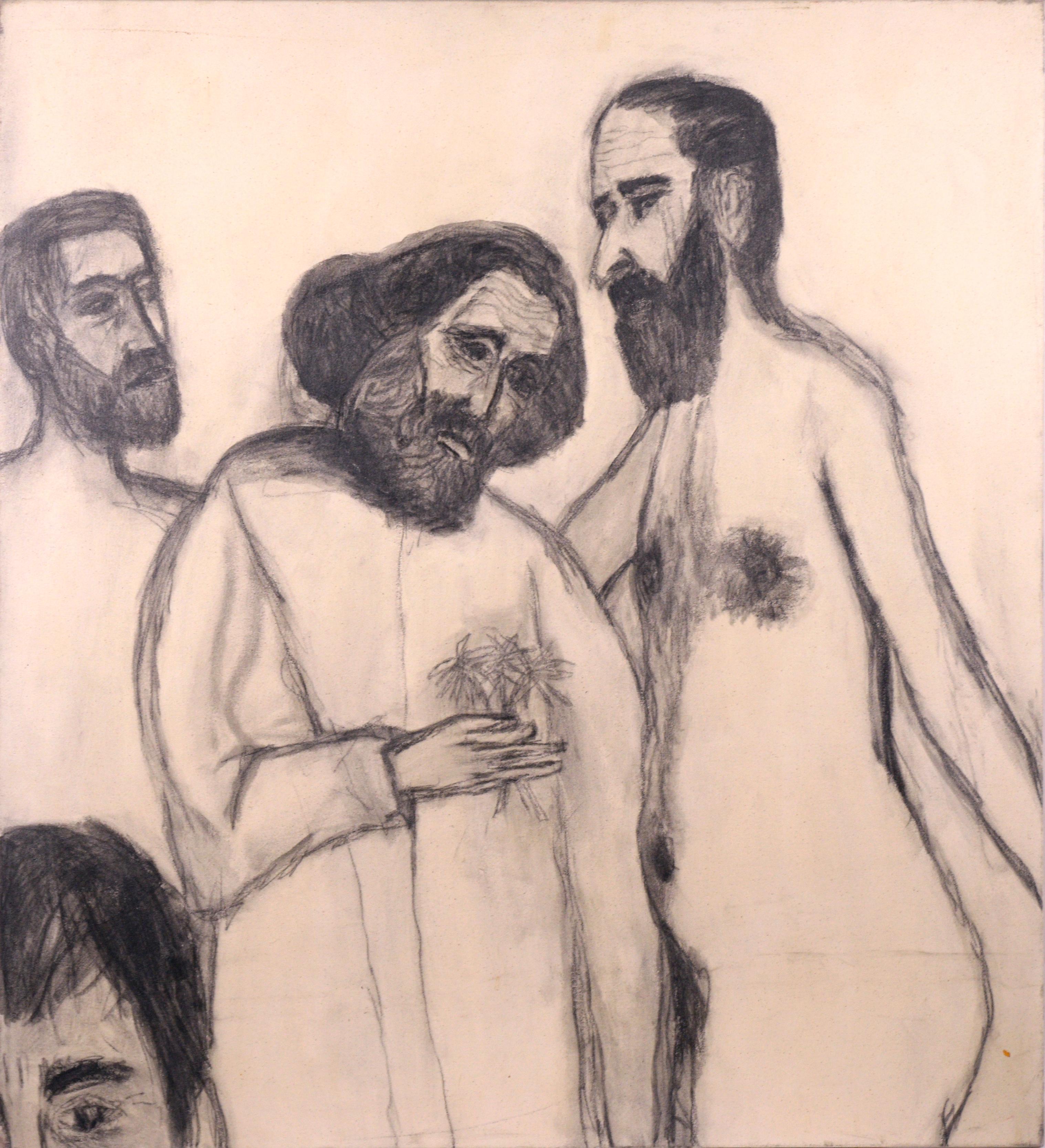
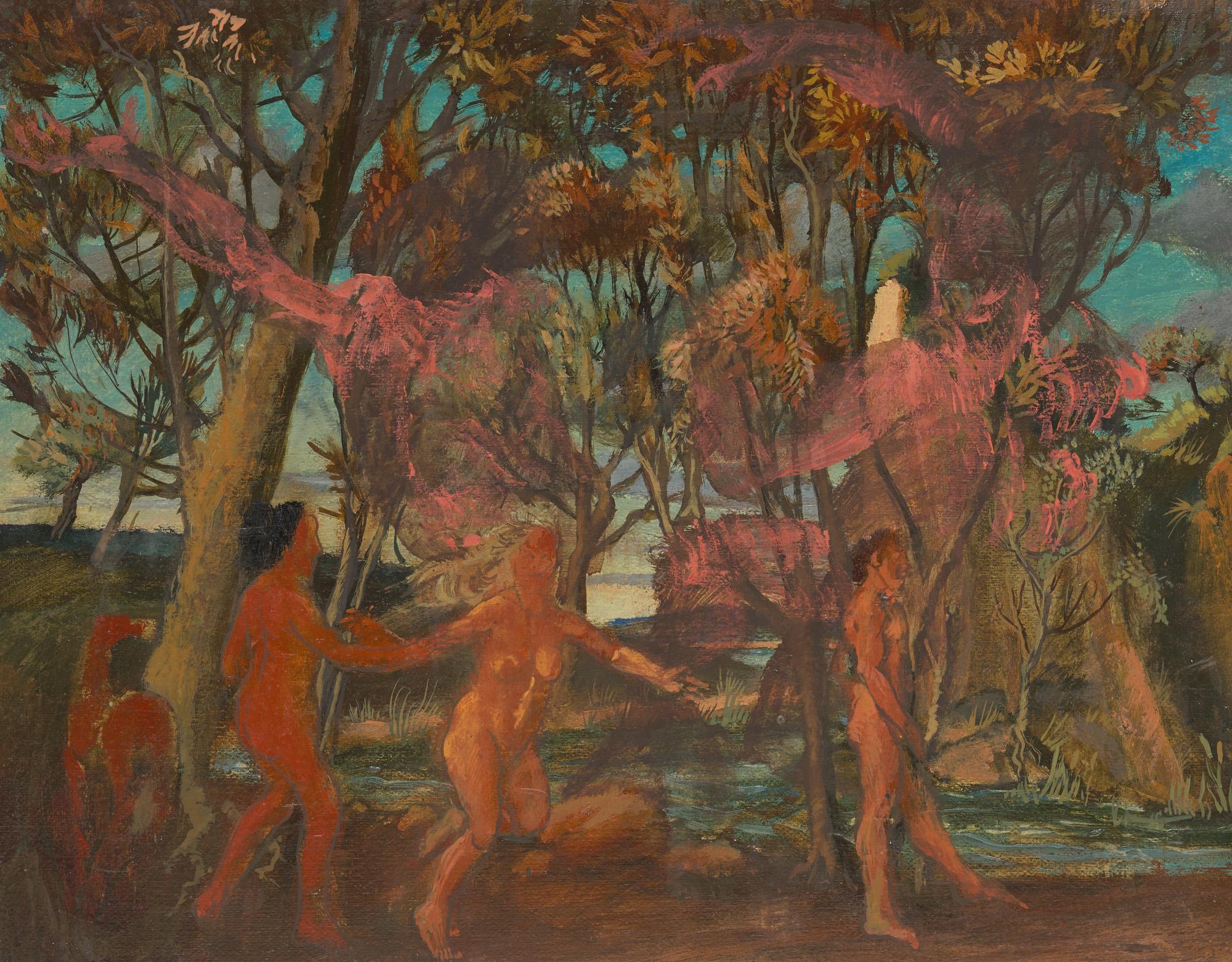
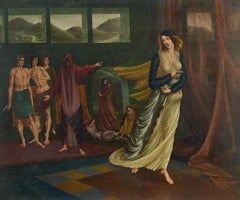
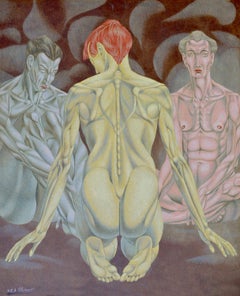
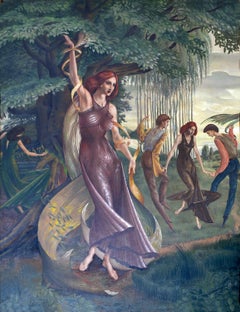
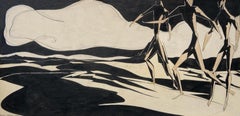
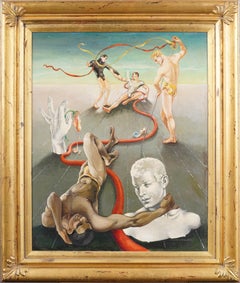
![[Bruce Sargeant (1898-1938)] Artist's Studio, Contemporary Figurative Painting](https://a.1stdibscdn.com/mark-beard-paintings-bruce-sargeant-1898-1938-artists-studio-for-sale/a_9323/1726073227289/Beard_Untitled_Artist_s_Studio__master.jpg?width=240)
